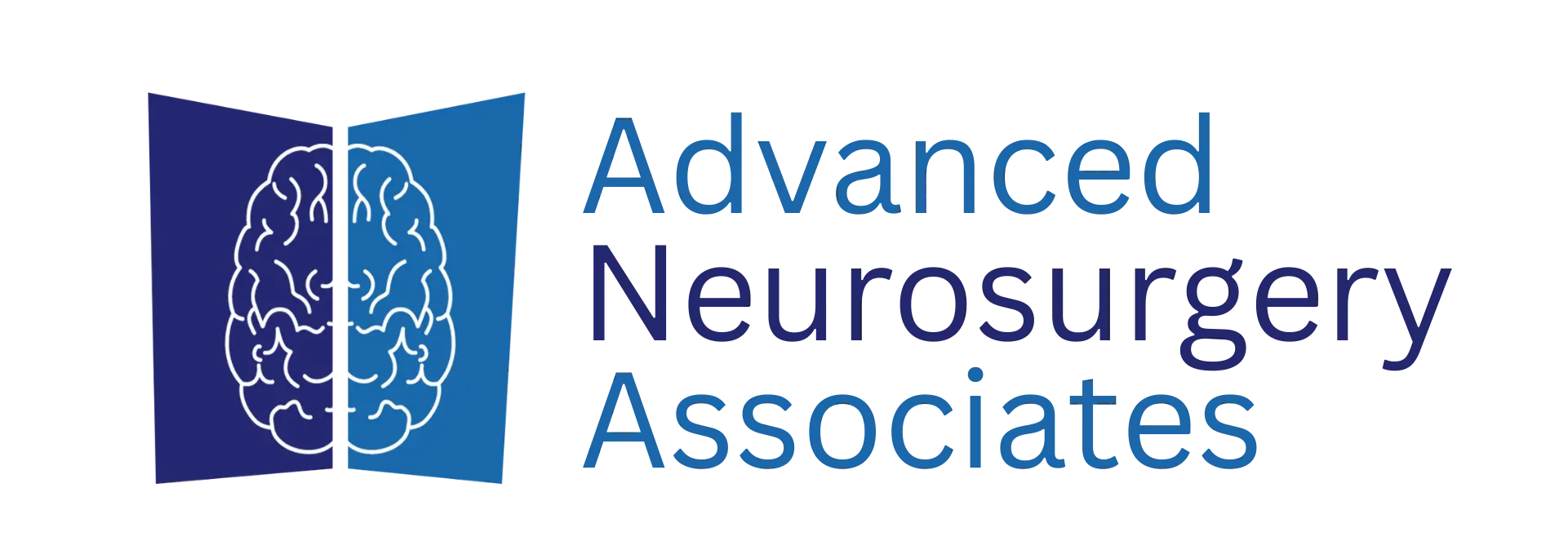Epilepsy in Adults
Epilepsy is a brain disorder in which a person has repeated seizures (convulsions) over time.
Seizures are episodes of abnormal brain activity that cause changes in attention or behavior. The epilepsy research institute CURE reports that 1 in 26 Americans develop epilepsy in their lifetime. If you or your loved one is searching for advanced Seizure Treatments in Rutherford NJ, our specialists are here to help.
Epilepsy may be due to a medical condition or an injury that affects the brain, or the cause could be idiopathic (of unknown origin). In this Q&A, Dr. Fried answers some of your most common questions about epilepsy.

At Advanced Neurosurgery Associates (ANA), we are acutely aware that epilepsy represents a complicated combination of physical as well as psychological and emotional consequences. That’s why we emphasize our team approach to complete family care for our many pediatric epilepsy patients. Families seeking compassionate and expert Epilepsy Treatment Rutherford NJ can trust our decades of experience.
Research explains the impact of pediatric epilepsy on such areas as learning disabilities, behavioral disorders, anxiety and depression. But perhaps most instructive of all are the testimonials of past ANA patients, Stephanie Conklin and Victoria Vega, who speak on the emotional and psychological impact of their epilepsy history. Both have resumed productive and seizure-free lives following successful surgery at ANA.
With almost 60 years of combined experience, the Advanced Neurosurgery Associates (ANA) medical team diagnoses and treats individuals suffering from seizures and ensures an unmatched level of expertise and knowledge in the field of epilepsy surgery.
Common causes of epilepsy
There are many causes of epilepsy, and each individual should be extensively tested to determine the proper diagnosis.
- Some common reasons why epilepsy occurs in adults include:
- Stroke or transient ischemic attack (TIA)
- Dementia
- Traumatic brain injury
- Infections, including brain abscess, meningitis, and encephalitis
- Brain problems that are present at birth (congenital brain defect)
- Brain injury that occurs during or near birth
- Brain tumor
- Abnormal blood vessels in the brain
Talk to one of our experts about your symptoms today.
Identifying Symptoms and Outcomes
Is There a Cure for Epilepsy?
Surgery is one treatment option that has seen patients living seizure-free lives, even long-term. Take a look Stephanie’s story below, who has celebrated five years seizure free.
Epilepsy Diagnosis
- patient history
- neurological exams
- laboratory tests
- other clinical studies.
Epilepsy Surgical Evaluation
Certain diagnostic tests may be performed to determine if surgery would be an effective treatment. This surgical evaluation can involve a number of tests to develop the diagnosis of the cause and location of the epileptic seizures.
Evaluation prior to surgery for epilepsy has changed radically in the past few decades, most notably since the advent of long-term video-electroencephalography (EEG) monitoring in the late 1970s, and advanced neuroimaging, specifically with the additional use of MRI.
Epilepsy Testing and Diagnosis
To develop the epilepsy diagnosis before surgery, patients partake in extensive testing, such as:
- Electroencephalogram (EEG), which helps identify the seizure focus
- Magnetic Resonance Imaging (MRI), the “gold standard” for locating and evaluating brain lesions
- Functional MRI (fMRI), which creates a “road map” of brain functions
- Single-photon Emission Computer Tomography (SPECT) to explore where the seizure starts and its spread patterns
- Intracarotid Memory and Speech Evaluation (Wada test), a test of language and memory functions.
- Both before and during surgery, tests may be performed to map motor, sensory, language and memory functions; such as functional brain mapping and awake craniotomy.
It is also important to consider the emotional effects. Neuropsychology and psychiatry are a vital part of ANA’s epilepsy team’s evaluation.
EEG & Video Monitoring
Electroencephalography (EEG) is the fundamental measure of identifying seizure focus. The epileptologists on our team are adept at reading the spikes and sharp waves that constitute a spectrum of shifting seizure focus. Most patients undergoing evaluation for surgery will require EEG with video telemetry to document the seizure pattern.
However, an appropriate focus goes beyond single readings. Our experts evaluate EEG monitoring over a period of time. This is a critical measure to determine a clear onset and location of seizure activity.
MRI
While computerized tomography (CT) scan can provide some useful information about lesions which may be causing seizures, the “gold standard” for locating and evaluating brain lesions is magnetic resonance imaging (MRI). The greatest advance of MRI technology for epilepsy is the incredible clarity of both the normal and pathological anatomy of the brain. Since the mid-1980s, this technology has allowed us to routinely identify lesions that were previously undetectable.
Functional MRI (FMRI)
Magneto-Encephalography
Nuclear Imaging
Nuclear medicine, which deals with imaging the body for both diagnostic and treatment purposes, plays an important role in the pre-surgical assessment of patients with refractory epilepsy. This is evident in the case of single-photon emission computed tomography (SPECT) which is used to determine the seizure onset zone.
SPECT (single proton emission computed tomography) has an important role in the investigation of surgical candidates. Ictal (meaning taking place during a seizure) SPECT has also been useful to study seizure-spread patterns. Blood flow increases in the brain area in which the seizure originates and the blood flow can become less than normal in that same area during non-seizure states. By injecting a small and safe amount of a radioactive substance into a patient’s blood stream via IV we can evaluate the blood flow in the brain at a given time. Changes in blood flow during and after a seizure can be helpful in localizing seizure focus and spread patterns.
Neuropsychology
Epilepsy Treatment
Epilepsy treatment varies depending on the severity of a patient’s seizures, the cause of epilepsy, age and a number of other factors.
Surgery is an alternative for patients whose seizures cannot be controlled by medications. In pediatric epilepsy, surgery may be required to avoid destruction to cognitive development, mental and psychological health.
Prior to surgery, a prospective patient undergoes a thorough evaluation consisting of complete physical and neurological examination and an assemblage of studies to assess if a patient will ultimately benefit from epilepsy surgery. At ANA, our team collaborates on cases to define the best epilepsy treatment path for each patient.
Medication
At least half of those newly diagnosed with epilepsy will become seizure-free with their first medication—if they take it regularly and as prescribed. The efficacy of these medications of course depends on the type and severity of the epilepsy. In some cases, medication may diminish but not completely control all seizure activity.
Many various types of anticonvulsant (also called antiepileptic) drugs are available. Some patients respond to one drug and some may need more than one. It may take several months before the best drug and dosage are determined. Patients are monitored throughout the medication process via blood tests.
Diet
A ketogenic diet, one which supplies the majority of calories from fat as opposed to glucose, mimics the body’s response to starvation by burning fat for energy. Scientists are not precisely sure why this diet prevents seizures, although it is being studied. Estimates vary from 10-30% of children who try it become seizure free, or almost seizure free. And over half who try it gain a 50% reduction in seizures. The remainder do not respond or are unable to tolerate the diet because of side effects.
Epilepsy Surgery for Children
- benign brain tumors,
- malformations of blood vessels (e.g. arteriovenous malformations, venous angiomas, and cavernous angiomas)
- strokes.
How Does Surgery Treat Epilepsy?
- the removal of epileptogenic tissue from the zone where seizures arise,
- an alteration in the brain, by interrupting the nerve pathways along which seizure impulses spread.
Lobectomy and Cortical Resection
The most common form of epilepsy surgery is a lobectomy or cortical resection. It is estimated that approximately 30% of patients with partial epilepsy have seizures that are not well controlled with medications and could benefit from this surgery.
Seizures in the temporal, parietal, frontal or occipital lobes may be treated surgically if the seizure-producing area can be safely removed without damaging vital functions.
Corpus Callosotomy
Corpus callosotomy is the sectioning, or separating of the corpus callosum—a nerve bridge which connects the two halves of the brain and integrates its functions. Separating the cerebral hemispheres reduces generalized seizures by confining the spread of an epileptic discharge to one cortex.
A corpus callosotomy may be performed when partial seizures secondarily generalize and it’s not possible to identify a single epileptic focus, or when resection of a localized focus would cause a pronounced neurological deficit. Uncontrolled generalized seizures may also be treated with this type of surgery.
The operation may be done in two steps. The first operation partially separates the two halves of the brain, but leaves some connections in place. If the generalized seizures stop, no further surgery is done. If they continue, a second operation to complete the separation may be performed.
Multiple Sub-pial Transection
Hemispherectomy
When a child has Rasmussen’s encephalitis, a rare, progressive disease affecting one whole hemisphere of the brain, a hemispherectomy may be performed.
A hemispherectomy is the removal of all or almost all of one side of the brain. Weakness on the side opposite the operation will continue, but the half that remains takes over many of the functions of the half that was removed.
Hemisperectomies may also be performed when children are born with conditions that cause excessive damage to one side of the brain, such as bleeding in the brain prior to birth.
Vagal Nerve Stimulator (VNS) Placement
Functional Brain Mapping and Awake Craniotomy
Epilepsy Surgery Recovery Time
Can Surgery Cure Epileptic Seizures?
Epilepsy surgery is measured by the level of improvement in seizures and quality of life. Adult studies of epilepsy surgery have shown that seizures can be greatly reduced or totally controlled in some cases, and many can stop AEDs. Pediatric studies also report that the majority of infants and young children show favorable outcomes in seizure control, and can also stop AEDs after surgery.
Success Rate After Epilepsy Surgery

WHAT WE OFFER SERVICES
Pediatric epilepsy, a condition that affects the nervous system, is the most common neurological problem in children.
Of the approximately 150,000 people in the U.S. who develop epilepsy each year, 20,000 to 45,000 of them are children and adolescents. But the highest risk group in the pediatric population for developing epilepsy are those ages 1 to 12 months.
Pediatric epilepsy is defined as two or more unprovoked seizures more than 24 hours apart in a child over one month old. Seizures are episodes of abnormal brain activity that cause changes in attention or behavior.
